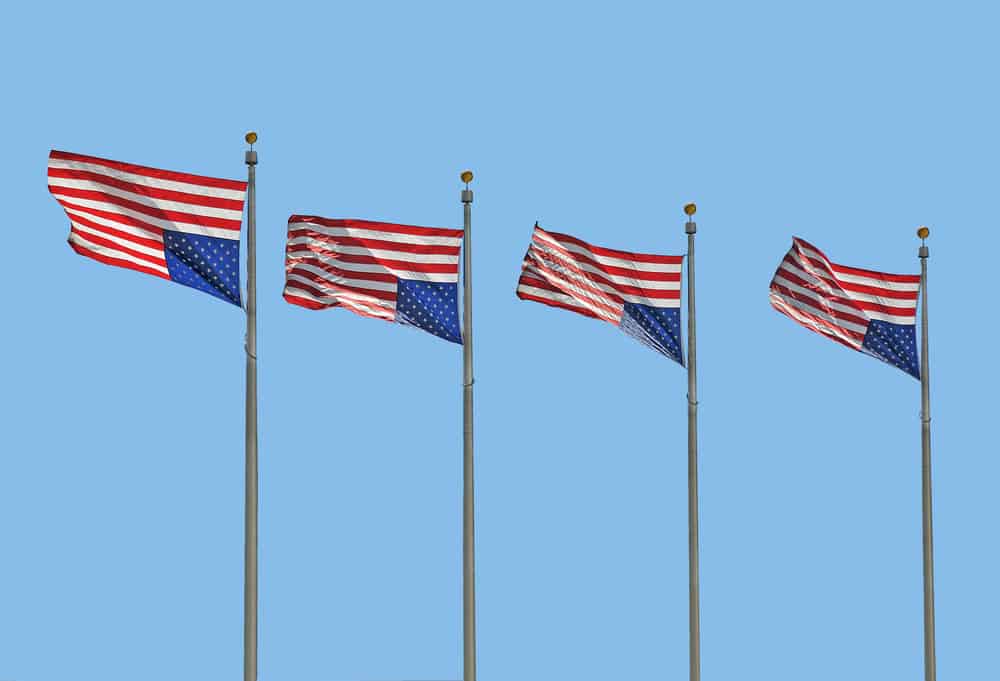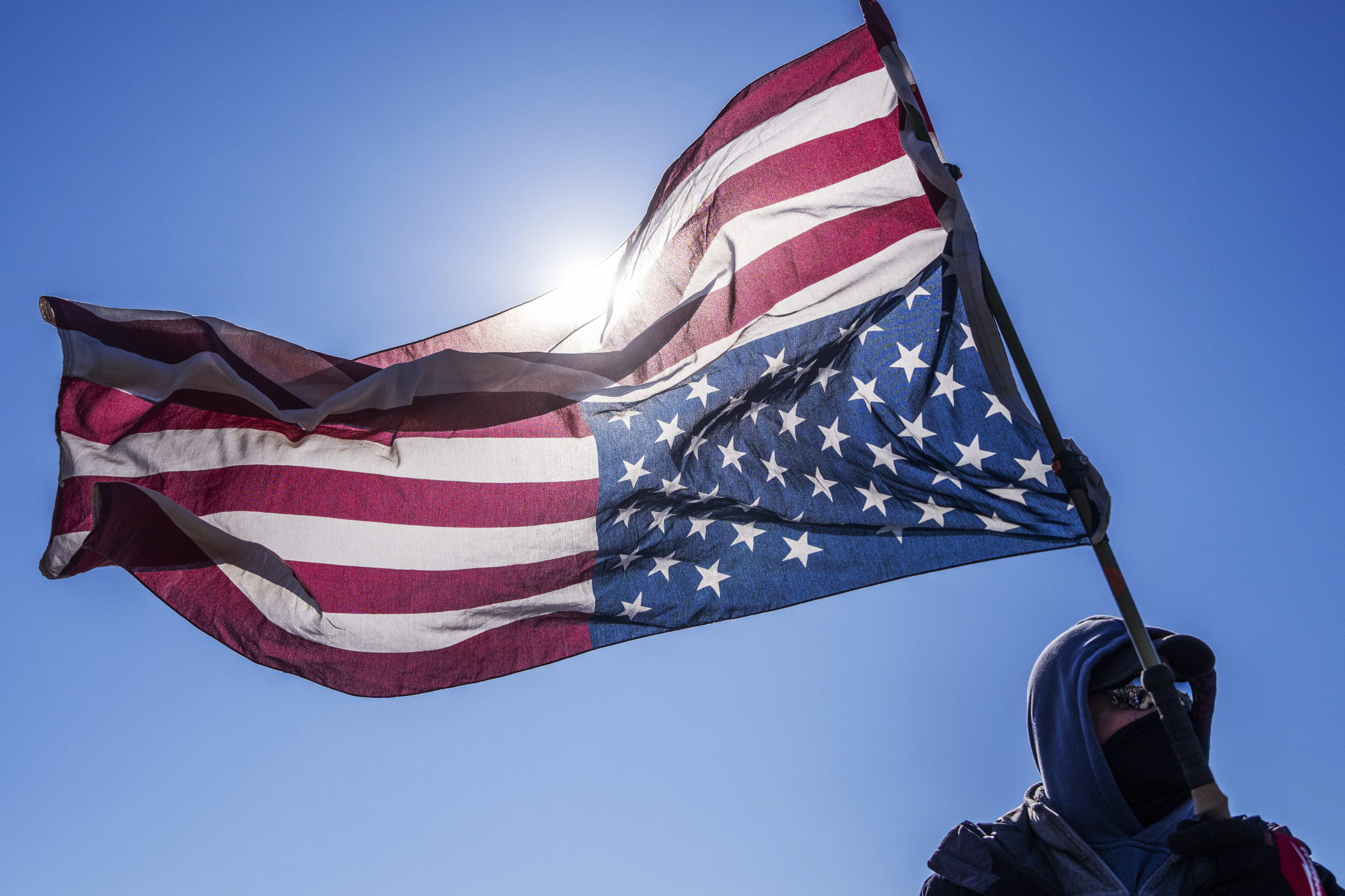What does it truly signify when the Stars and Stripes are turned upside down? The inverted American flag, a potent symbol steeped in both tradition and modern controversy, represents far more than just a simple act of defiance; it's a complex visual statement carrying a weight of history, legal interpretation, and evolving political expression.
The act of inverting the American flag is a gesture rich in symbolism, often employed to convey a sense of crisis, protest, or dissent. While it's enshrined in tradition as a distress signal, primarily used to indicate extreme danger to life or property, its contemporary usage has broadened to encompass a range of political statements. This practice, though seemingly straightforward, is fraught with complexities stemming from its historical roots, its legal standing, and the evolving social and political climate in which it's deployed. The flag code itself is clear: the flag should only be flown inverted in cases of "extreme danger to life or property." However, the interpretation and enforcement of this guideline remain a subject of debate and challenge, especially in the context of political expression. The practices evolution from a nautical distress signal to a tool for political protest is a fascinating exploration of the power of symbols in shaping public discourse.
Consider the various scenarios in which this symbol comes to the forefront. It can be the silent plea of a ship in peril, a cry for help when a vessel is sinking. However, in modern times, its seen during protests, used to express discontent, and often as a stark commentary on the state of the nation. This adaptation brings to light several questions. Firstly, how can one reconcile the traditional, legal definition of distress with its modern political interpretations? Secondly, what are the implications for free speech when an action that contradicts federal law is undertaken to express a political opinion? Lastly, how has this symbolism adapted and changed, and what is its enduring appeal?
- Huck Kwong Age Career Relationship With Charli Xcx All You Need To Know
- Darren Barnet Movies Shows More Your Ultimate Guide
| Aspect | Details |
|---|---|
| Symbolism | Traditionally a signal of "dire distress," a cry for help, or an indication of extreme danger to life or property. Also used as a form of political protest, dissent, or a rejection of established norms. |
| Historical Context | Rooted in nautical tradition where an inverted flag signaled a vessel in distress. Over time, it expanded to reflect a broader sense of crisis, political dissent, or a perceived threat to the nation. |
| Legal Implications | U.S. Federal law prohibits flying the flag upside down except as a signal of distress. However, the First Amendment protects freedom of speech, and courts have ruled that displaying an inverted flag can be considered protected speech. |
| Modern Examples | Contemporary protestors have increasingly adopted this symbol, particularly in response to significant political and social events, such as the Supreme Court decisions and instances of national unrest. The act is often used to express deep discontent or protest against specific government policies or actions. |
| Debates and Controversy | It sparks ongoing debate about patriotism, free speech, and respect for national symbols. The ambiguity in interpreting "extreme danger to life or property" opens it up to varied interpretations. The practice is viewed by some as disrespectful to the flag and by others as a powerful form of dissent. |
| Interpretations | It can indicate a range of meanings, from an immediate call for help to a deeper critique of societal issues. It is important to understand the context in which the symbol is used to decipher the message. |
The symbolism of the inverted flag is far from new. Throughout the country's history, this gesture has represented various causes and sentiments, reflecting a nation grappling with complex issues. Consider, for example, its use in the wake of the January 6th insurrection at the U.S. Capitol, where it appeared as a potent symbol of perceived distress and a critique of the political climate. This wasnt an isolated event, nor was it the first instance where the flag was used to send a message to the nation's leaders.
The legal implications of flying an inverted flag are complex. While the U.S. Flag Code provides clear guidance on the proper display of the flag, it also acknowledges its use as a distress signal. The First Amendment, however, protects freedom of speech, leading to a nuanced interplay between law and expression. In Washington, the court decreed that displaying an upside-down flag was a form of protected First Amendment speech. This decision underscores the judiciarys recognition of the expressive power of this symbol, even when it might violate specific regulations.
The ambiguity surrounding the interpretation of extreme danger to life or property adds another layer of complexity. This phrase is open to interpretation, allowing individuals and groups to express their sense of crisis in various ways. Those who choose to display the inverted flag do so from a range of viewpoints. For some, it signifies a direct and imminent threat. For others, it is a more symbolic statement about the state of the country.
- Bdh Store Emergency Food Gear More Shop Now
- Adriana Chechik Injury Update Latest News Recovery Journey
The black flag, traditionally linked with mourning or anarchy, when combined with the inverted flag, creates an even more intense message. In these instances, the combined symbolism suggests a profound sense of crisis, or even a rejection of established structures. The choice to utilize this potent visual language demonstrates the commitment of protestors to express their discontent in a way that is as memorable as it is thought-provoking.
Contemporary protest movements have widely adopted the inverted flag to convey a range of messages. Since June 2022, progressive activists have been displaying the flag upside down, particularly in the wake of decisions made by the Supreme Court. News reports, for example, detailed the appearance of the inverted flag at the home of a U.S. Supreme Court Justice, highlighting the deep political divide and the passionate emotions at play. Such instances underscore the flags capacity to communicate strong sentiments in a direct and unmistakable manner.
This act frequently signifies a belief that there is a crisis within the nation, regardless of its precise nature. It is a way for individuals to express their feelings of being at risk, or to express a perceived threat to the values and principles they hold. The impact is immediate and can be a clear symbol of protest and a call to action.
The U.S. Flag Code dictates the proper handling, display, and disposal of the American flag. This code is not legally enforceable, however, it provides an essential framework for the symbols respect and reverence. Many Americans are aware of these guidelines, and yet, choose to employ the inverted flag as a form of political protest, showcasing how such symbols can challenge established norms and spark debate.
When someone flies the American flag upside down, they are generally understood to be calling for assistance or signaling distress. This act is a recognizable gesture that denotes a state of grave danger, whether it is a threat to life or property, or a threat to the ideals and values upon which the nation was founded.
The conversation surrounding the upside-down flag goes beyond mere flag etiquette. It is a debate over free speech, civic responsibility, and the meaning of patriotism itself. As long as the nation remains grappling with complex questions, this powerful symbol will continue to provoke reaction.
Therefore, the inverted American flag remains a symbol of multifaceted meaning. It is a testament to both the history of the nation, and the rights of its citizens. It is a symbol that demands attention, urging a closer inspection of the issues and the events that have prompted its display.
- Calculate The Mean Formulas Examples Types Learn Now
- Bikini Waxing Expert Tips Tricks For Smooth Skin


